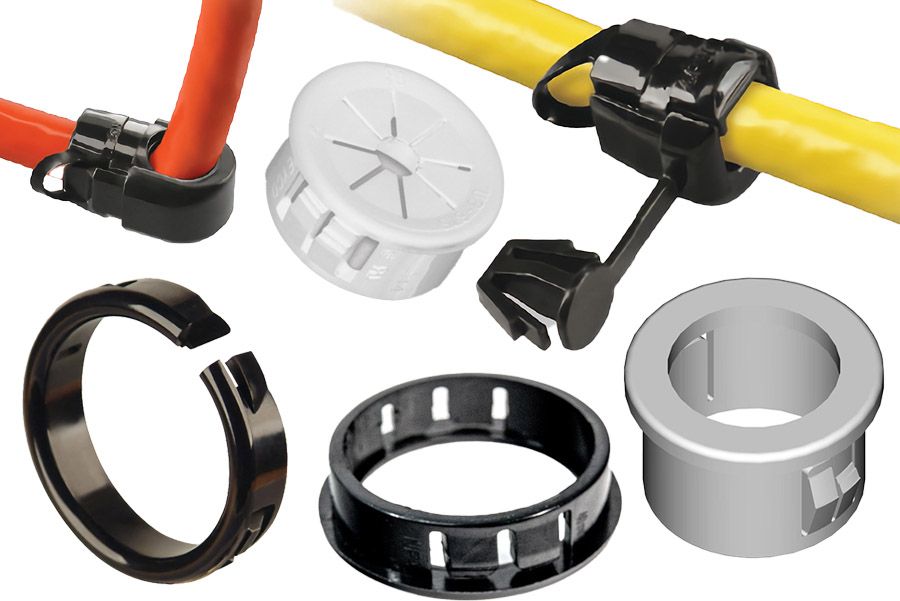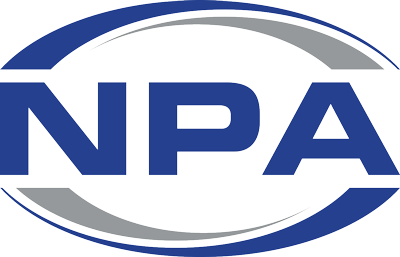
The bushings available today are as varied as applications they provide.
What exactly are bushings?
Bushings are cylindrical components that are used to provide a barrier between two moving parts, or to isolate a component from its surroundings. They are typically made of rubber, plastic, or metal and come in a variety of shapes and sizes depending on their specific application.
Examples of how and where bushings are used
Bushings are used in a wide range of mechanical applications to reduce friction, absorb shock, and reduce noise and vibration. Some common uses for bushings include in automotive suspensions, electric motors, and power tools.
Advantages of bushings
- They can help reduce wear and tear on mechanical parts by absorbing shock and reducing friction
- They can help reduce noise and vibration in machinery
- They can help improve the overall performance and longevity of mechanical systems
Some of the different types of bushings sold by NPA
- Snap bushings: These are a type of bushing that are designed to snap into place, providing a quick and easy way to secure cables or wires.
- Armour bushings: These are bushings that are designed to protect wires or cables from abrasion or damage caused by sharp edges or rough surfaces
- Open/closed bushings: These are bushings that are either open on both ends or closed on one end, and are used to provide a barrier between two moving parts.
- Universal bushings: These are bushings that are designed to fit a wide range of different shaft sizes or components.
- Lamp cord bushings: These are bushings that are designed specifically for use with lamp cords, and are used to provide a secure connection between the cord and the lamp fixture.
Snap bushings typically come in black or white, to match different cable colours or to help with organization.
Armour bushings are typically made of a durable material such as nylon or polypropylene, and may come in different colours or sizes depending on the specific application.
Open/closed bushings can come in a variety of shapes and sizes depending on the specific application, and may be made of materials such as rubber, plastic, or metal.
Universal bushings are typically made of a flexible material such as rubber or silicone, and may be designed to fit a range of different shaft sizes or components.
Lamp cord bushings are typically made of a heat-resistant material such as silicone, and are designed to provide a secure connection between the lamp cord and the lamp fixture.
Some purchasing criteria
Before purchasing bushings, there are several considerations that may be important to take into account, including;
- Material: Different materials offer varying levels of durability, resistance to wear and tear, and ability to withstand environmental factors such as temperature changes and exposure to chemicals or moisture. Some common materials for bushings include rubber, polyurethane, nylon, and bronze.
- Size and shape: Bushings come in a wide range of sizes and shapes, and it's important to choose the right one for the specific application to ensure a proper fit and maximum effectiveness.
- Load capacity: The load capacity of a bushing refers to the maximum weight or force it can support without failing. Choosing a bushing with the appropriate load capacity is important to ensure it can withstand the demands of the application.
- Operating conditions: Consider the environmental conditions the bushing will be exposed to, such as temperature, humidity, and exposure to chemicals or other elements. Some bushings are designed specifically to withstand harsh operating conditions.
When it comes to bushings that can withstand harsh conditions, your choice will depend on the specific environmental factors and operational demands of the application. Generally speaking, there are several types of bushings that are known to offer high performance and durability in harsh conditions;
- Bronze Bushings: These are popular for their resistance to corrosion, wear, and high temperatures, making them ideal for use in harsh environments.
- Polyurethane Bushings: These are resistant to oil, chemicals, and abrasion, making them suitable for use in applications that are exposed to harsh chemicals, oils, or solvents.
- Graphite-impregnated Bronze Bushings: These bushings have graphite embedded in the bronze material, which provides excellent self-lubricating properties, reducing friction and wear in harsh operating conditions.
- Ceramic Bushings: These bushings are highly resistant to heat, wear, and corrosion, making them ideal for use in harsh environments with high-temperature and corrosive gases.
- Teflon-lined bushings: These are suitable for use in high-load and high-temperature applications, offering low friction, high wear resistance, and excellent chemical resistance.
It's important to note that selecting the appropriate bushing for a particular application requires careful consideration of the operating conditions and environmental factors that will be present.
Consulting with a bushing manufacturer or supplier such as NPA can help ensure that the chosen bushings will withstand the relevant conditions.
NPA’s technical consults are here to support you with your bushing requirements, ensuring that you make the best choice right from the start.
Call us today on (08) 8268 2733 or visit our online store by clicking here.
View other products in the NPA Buyer’s Guide Series:

